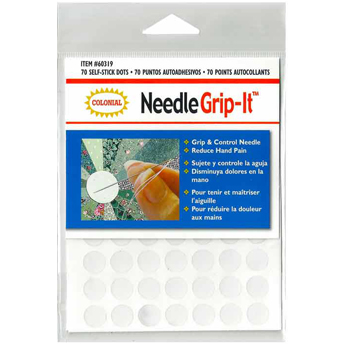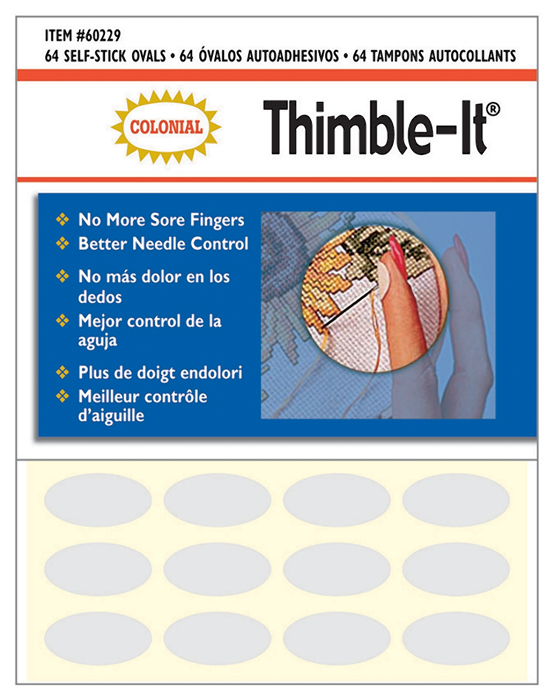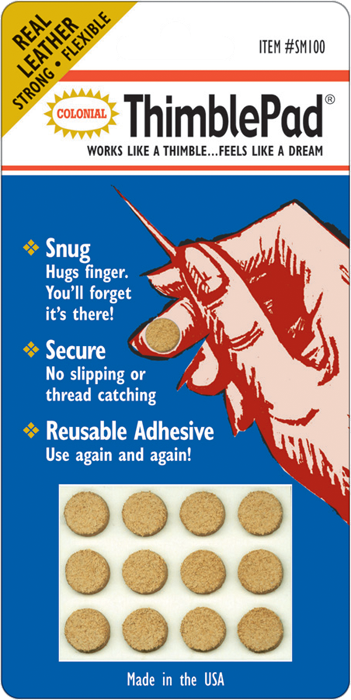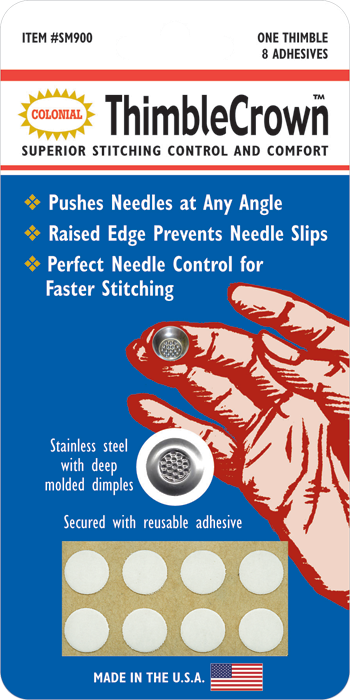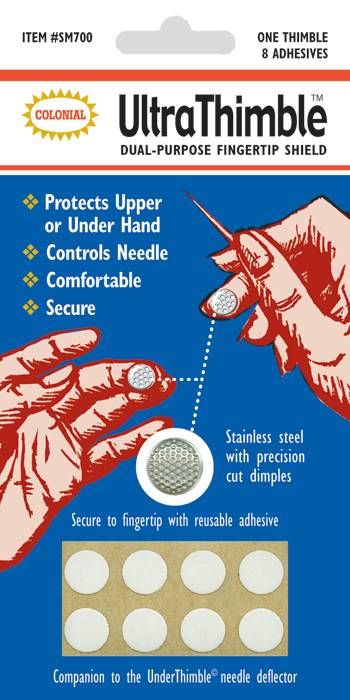Hey folx! Shannon and Jason checking in.
Back in February, we had the pleasure of meeting the Colonial Needle Company team at Sew Expo. We chatted about reviewing their products and made it crystal clear—we’re all about honesty, no punches pulled so if we like a product, we will shout it from the rooftops and use it.
On the bustling Sew Expo show floor, they handed us packs of needles, various sewing tools, and what looked like tiny metal disks with dimples and sticky tabs. We’re all about toys for the sewing studio, but our first thought about those metal disks? “Okayyyy, not sure how this will play out, but let’s give it a whirl.”
Fast forward to May, and Jason, with his big mitts (no offense, J!), was tearing up the house looking for a thimble for sewing a label onto a quilt. Most thimbles on the market aren’t built for his large fingers. Then, lightbulb moment—we remembered those Thimble Crowns from Colonial Needle. We pulled them out of the box, applied the sticky dot, slapped one on Jason’s finger, and off he stitched. It was anyone’s guess how it would turn out.
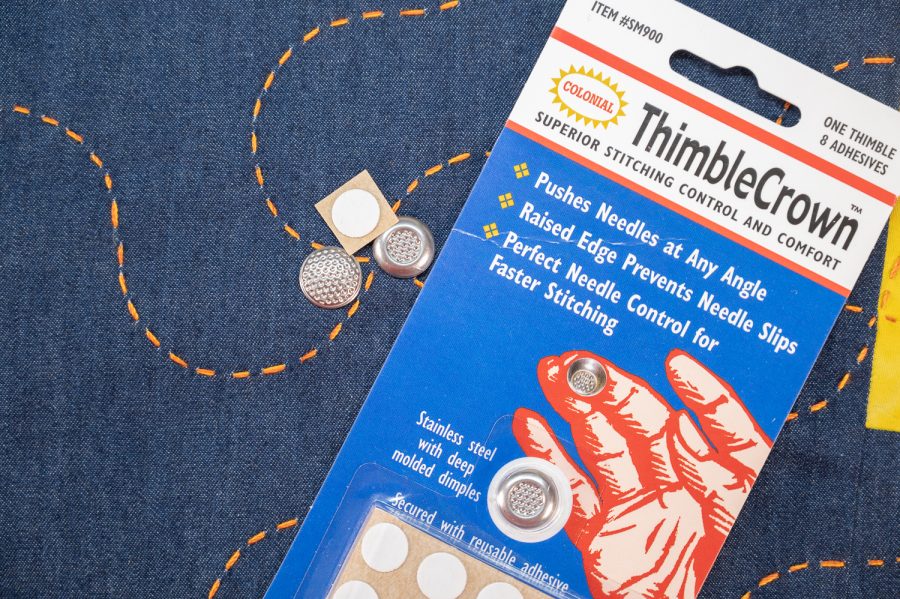
So, real talk. For a long time, we have joked about starting a blog titled “That’s the dumbest thing I’ve ever seen… and now I can’t live without it.” If that blog existed, the Thimble Crown would be a star. Seriously, what a game changer!

Fit like a glove—err, crown—boosted his nimbleness and let him crank out even finer stitches (and trust us, his stitches were already A+). It upped his needle game, gave him more comfort, and let him tweak its position to suit his sewing style.
Shannon quickly jumped on board using the dimpled crowns for embroidery, quilting, and general hand sewing as well as EPP. See, Shannon has nails, she will not sacrifice her manicure to a full covering thimble. These little wonders were the PERFECT solution for her manicured fingers because they stay in place without interfering with the nails. Also, she tends to stitch using the side of her finger to push the needle and this little Crown Thimble stayed securely in place even on the inside edge of her middle finger. You can imagine this was an amazing little tool for rocker stitch quilting. Yup… she’s sold on them now too. Completely.
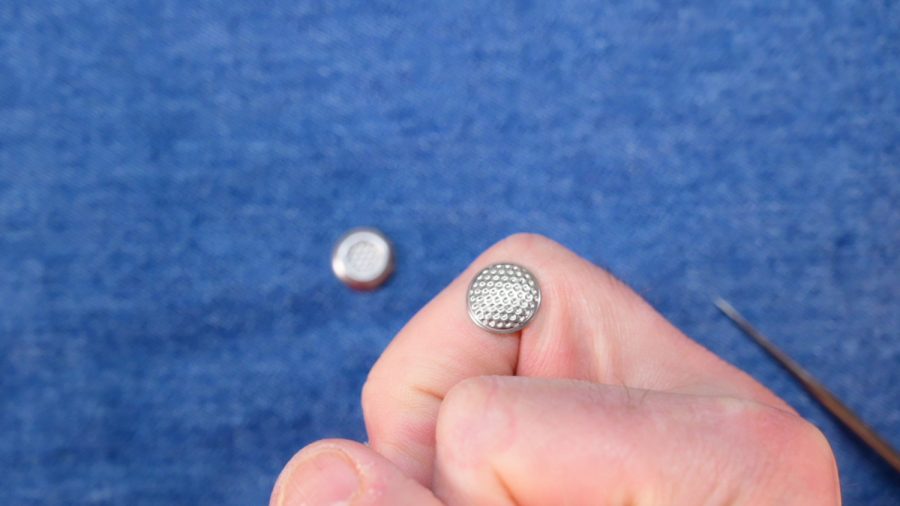
Both of us tested the Thimble Crowns on our middle fingers, knuckles—heck, even our palms for lighter sashiko stitching. It’s ace for most of our hand stitching gigs: basic sewing, embroidery, quilting, mending, you name it. Honestly, not sure how we coped without one all these years.
Colonial Needle offers a range of these thimble tips for different sewing jobs. Check ’em out and give ’em a whirl. Next up for us? We’re trying the Under Thimble and Thimble Dimple for some hand quilting. We’ll keep you posted!
Stitch On!
Shannon & Jason

